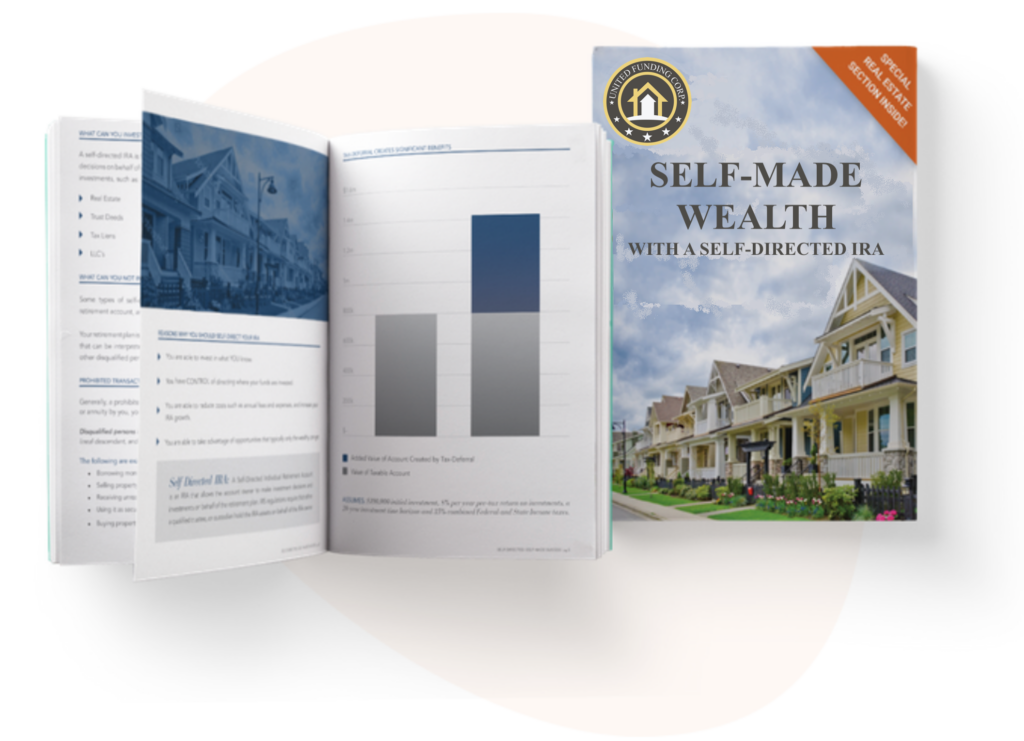
Exploring Alternative Investments in a Self-Directed IRA
When planning for retirement, most people consider traditional investments like stocks, bonds, and mutual funds. However, for those looking to diversify and potentially increase their returns, alternative investments offer a compelling opportunity. These non-traditional assets can be held in a self-directed IRA (SDIRA), giving investors greater flexibility to build a customized retirement portfolio.
This guide will explore alternative investments, how to include them in a self-directed IRA, and the steps to open one.
What Are Alternative Investments?
Alternative investments are assets that fall outside of traditional securities, such as real estate, cryptocurrency, and private equity. Unlike conventional investment options, these assets are not typically available in standard IRAs or 401(k) plans.
SDIRAs allow investors to hold a wide range of alternative investments, offering diversification and potentially higher returns. However, they also come with unique risks, including market volatility, regulatory requirements, and liquidity concerns.
Your Ultimate Guide to Financial Success
Your retirement is a top priority—for you and for us. Our Ultimate Retirement Guide is designed to provide everything you need to secure your financial future. Inside, you’ll discover the key differences between various retirement accounts and explore multiple wealth-building strategies, including real estate and more. Download it today and take control of your future!

How to Invest in Alternative Assets Using an SDIRA
A standard IRA does not permit alternative investments. Instead, you need to open a self-directed IRA, which allows you to invest in a variety of alternative assets. Here’s how it works:
- Choose an SDIRA Custodian – A custodian manages your account, ensuring compliance with IRS regulations.
- Open an SDIRA Account – Complete an application with personal details and funding information.
- Fund Your Account – You can fund the account through contributions, transfers, or rollovers from another IRA or retirement plan.
- Select Your Investments – Work with your custodian to execute transactions and purchase alternative assets.
- Manage and Monitor – Stay informed about your investments, ensuring they comply with IRS rules.
11 Alternative Investments You Can Hold in an SDIRA
If you’re considering an SDIRA, here are 11 alternative investment options to help diversify your portfolio:
1. Real Estate
Real estate is one of the most popular alternative investments for SDIRA holders, offering the potential for passive income and long-term appreciation.
Types of real estate investments include:
- Rental properties (residential and commercial).
- Fix-and-flips, where investors buy, renovate, and resell properties.
- Raw land, which can appreciate in value or be developed.
- Real Estate Investment Trusts (REITs), which allow investors to pool funds into property investments.
2. Cryptocurrency
Digital currencies like Bitcoin, Ethereum, and other cryptocurrencies can be held in an SDIRA. Cryptocurrency investments offer the potential for high returns, but they come with significant market volatility.
Because cryptocurrencies are digital assets, they require secure storage solutions, such as custodians specializing in crypto IRAs.
3. Precious Metals
Gold, silver, platinum, and palladium are popular SDIRA investments because they can hedge against inflation and provide a store of value.
To be eligible for an SDIRA, precious metals must meet IRS purity standards and be stored in an approved depository.
4. Private Equity
SDIRAs allow investors to buy into privately held companies, including startups and established businesses.
- Investing in private equity can yield substantial growth.
- These investments are less liquid, making them ideal for long-term strategies.
5. Trust Deeds & Promissory Notes
Investors can act as lenders, funding real estate transactions through trust deeds and promissory notes.
- Borrowers pay interest on the loan, creating passive income.
- If a borrower defaults, the lender may gain ownership of the property.
6. Tax Liens
When property owners fail to pay their taxes, municipalities issue tax liens. Investors can purchase these liens, earning returns through:
- Interest payments from the property owner.
- Foreclosure, where the investor may take ownership of the property.
7. Private Lending
Investors can use SDIRA funds to act as private lenders, issuing loans to individuals or businesses.
- Terms, interest rates, and repayment schedules can be customized.
- Due diligence is essential to reduce the risk of default.
8. Venture Capital
Investing in early-stage companies through venture capital can be highly rewarding.
- If a startup succeeds, returns can be substantial.
- If the company fails, the investment may be lost.
9. Oil, Gas, and Mineral Rights
Investors can purchase rights to natural resources, such as:
- Oil fields.
- Gas wells.
- Mining operations.
Income is generated through lease agreements or royalties, but commodity prices and extraction regulations can impact profitability.
10. Equipment Leasing
Investors can purchase machinery, vehicles, or industrial equipment and lease them to businesses.
- Generates steady, passive income.
- Due diligence on renters helps minimize risk.
11. Commodities
Investing in physical goods, such as agriculture, oil, or metals, can hedge against inflation and market downturns.
However, commodities require:
- Proper storage facilities.
- Compliance with environmental regulations.
How to Open a Self-Directed IRA
1. Choose an SDIRA Custodian
Not all financial institutions offer SDIRAs. Choose a custodian approved by the IRS with experience handling alternative assets.
2. Select the Type of IRA
- Traditional SDIRA: Contributions are tax-deductible, and withdrawals are taxed.
- Roth SDIRA: Contributions are made after taxes, and qualified withdrawals are tax-free.
3. Complete the Application
Submit personal and financial details, including:
- Social Security Number.
- Beneficiary information.
- Transfer or rollover details (if applicable).
4. Fund the Account
You can fund your SDIRA via:
- Direct contributions (subject to annual limits).
- Transfers from an existing IRA.
- 401(k) rollovers.
For 2025, the annual contribution limit is $7,000 ($8,000 for those 50 and older).
5. Choose Your Investments
Once funded, work with your custodian to purchase alternative assets that align with your retirement strategy.
FAQs About SDIRAs
Are There Restrictions on What I Can Hold in an SDIRA?
Yes. The IRS prohibits holding:
- Collectibles, such as art, antiques, and stamps.
- Life insurance policies.
- Personal-use assets, including vacation homes or office space you use.
- Transactions with disqualified persons (e.g., family members or business partners).
Can I Live in a Property Held by My SDIRA?
No. You cannot live in or personally use real estate owned by your SDIRA. Doing so would violate IRS rules and lead to penalties.
Do I Need a Custodian for My SDIRA?
Yes. The IRS requires SDIRAs to have an approved custodian to:
- Maintain records for tax compliance.
- Process transactions.
- Ensure that investments meet IRS regulations.
Conclusion
A self-directed IRA opens the door to a diverse range of alternative investments, from real estate to cryptocurrency and private equity. While SDIRAs offer greater flexibility and potentially higher returns, they also require careful management and due diligence.
By choosing the right custodian, selecting appropriate investments, and staying compliant with IRS regulations, investors can build a robust retirement portfolio tailored to their long-term financial goals.
